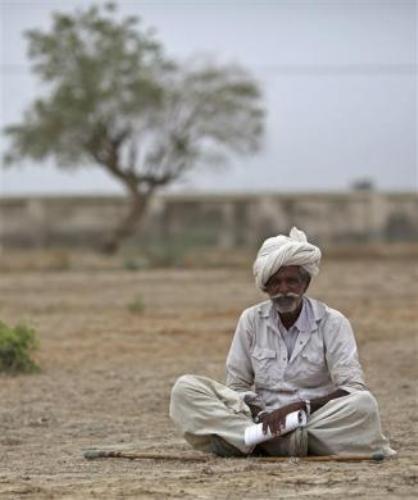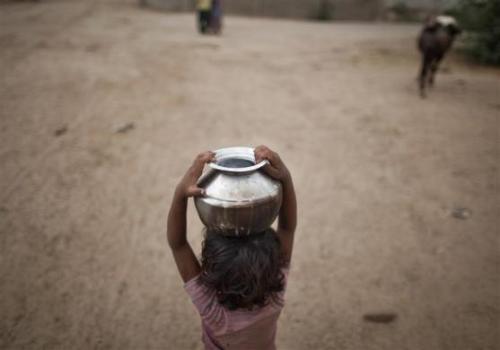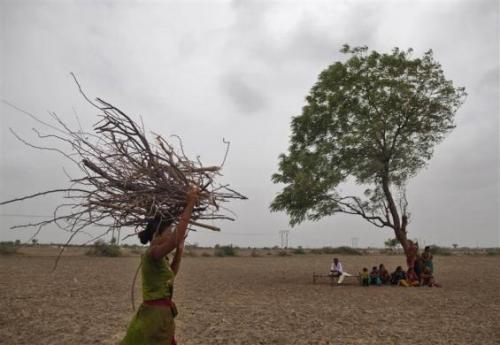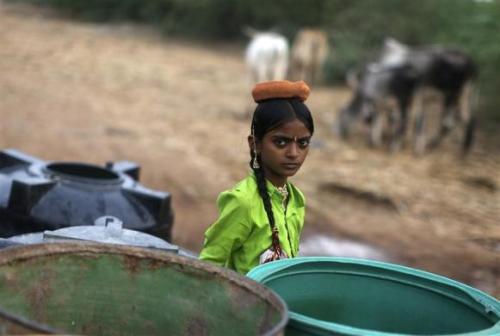Photographs: Ahmad Masood/Reuters Sanjeeb Mukherjee in New Delhi
Heavy rains in August have not only narrowed the overall rainfall deficiency in the southwest monsoon this year to 12 per cent, these also ensured the month recorded the highest rainfall in the latest four drought years.
The rains in August have also led to speculation that if the trend continues, rains in September, the terminal month of the four-month monsoon season, could be better, thus aiding production of paddy and other kharif crops.
"I don't think September rains would be impacted by the El Nino. Even if temperatures increase because of El Nino, I do not think it would impact the rains.
. . .
August rains best among recent drought years
Image: Five-year-old Joshiya, carries a metal pitcher filled with water from a near-by well at Badarganj village in Gujarat.Photographs: Ahmad Masood/Reuters
"It may affect other parts of the world," Agriculture Secretary Ashish Bahuguna told reporters.
"Normally, the monsoon starts withdrawing from northwest India around September 1. "This year, it seems the withdrawal would be delayed, as the onset of monsoon was delayed. We will have more rainy days," he said.
The India Meteorological Department has predicted rainfall in September might be less than in August because of the El Nino weather phenomenon.
IMD is expected to release its forecast for September later this week.
. . .
August rains best among recent drought years
Image: A village woman carries firewood as others rest under a tree after they migrated due to shortage of water on the outskirts of Sami town in Gujarat.Photographs: Ahmad Masood/Reuters
"Usually, we get about 26.13 centimetres of rainfall in August, but till Wednesday, rains this year have been one per cent more than normal," director of IMD's Long Range Forecast Department, D S Pai, told Business Standard.
In the last four drought years of 2009, 2004, 2002 and 1987, rainfall in August was 20.2 per cent, 4.3 per cent, 12.9 per cent and 3.7 per cent deficient, respectively.
"In a way, rains this August were the best we had in years in which overall rainfall was bad," said an official.
In case total rainfall deficiency in a particular year is more than 10 per cent at the end of the four-month southwest monsoon starting June and 20-40 per cent of the country records drought conditions, IMD declares the year a drought year.
. . .
August rains best among recent drought years
Image: A girl stands next to the empty containers after the government-run water tanker left at Charanka village in Gujarat.Photographs: Ahmad Masood/Reuters
By the end of July, rainfall deficiency stood at about 20 per cent across the country. However, the Indian Ocean Dipole, also called the Indian Nino, helped revive rains, said Bahuguna.
He added better rains in September would help retain soil moisture and support the sowing of rabi crops.
On kharif crops, Bahuguna said the scenario looked good, and the gap in sowing areas had been overcome, except in parts of Gujarat, Karnataka and Maharashtra, where the rainfall was still less than normal.






article